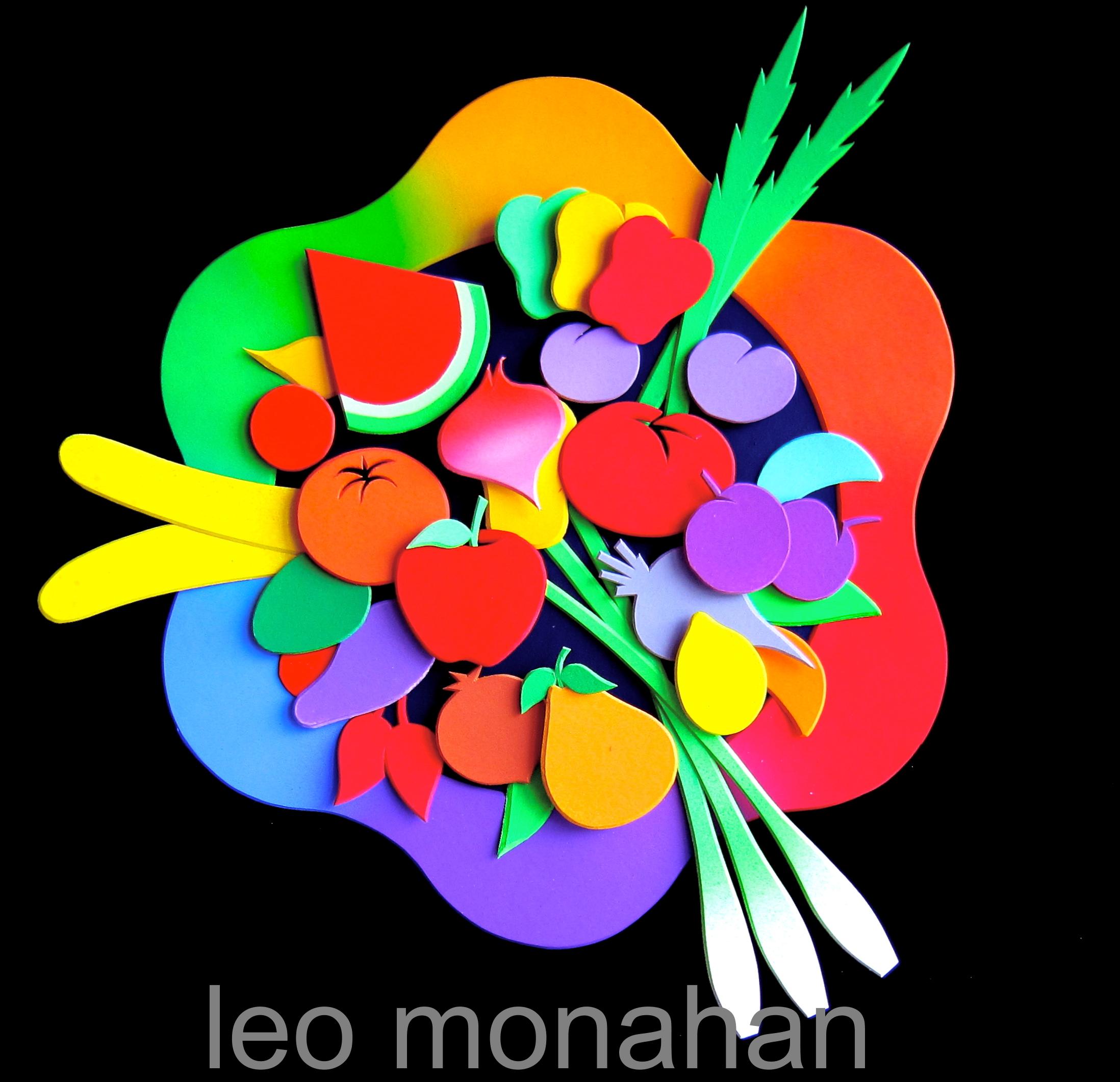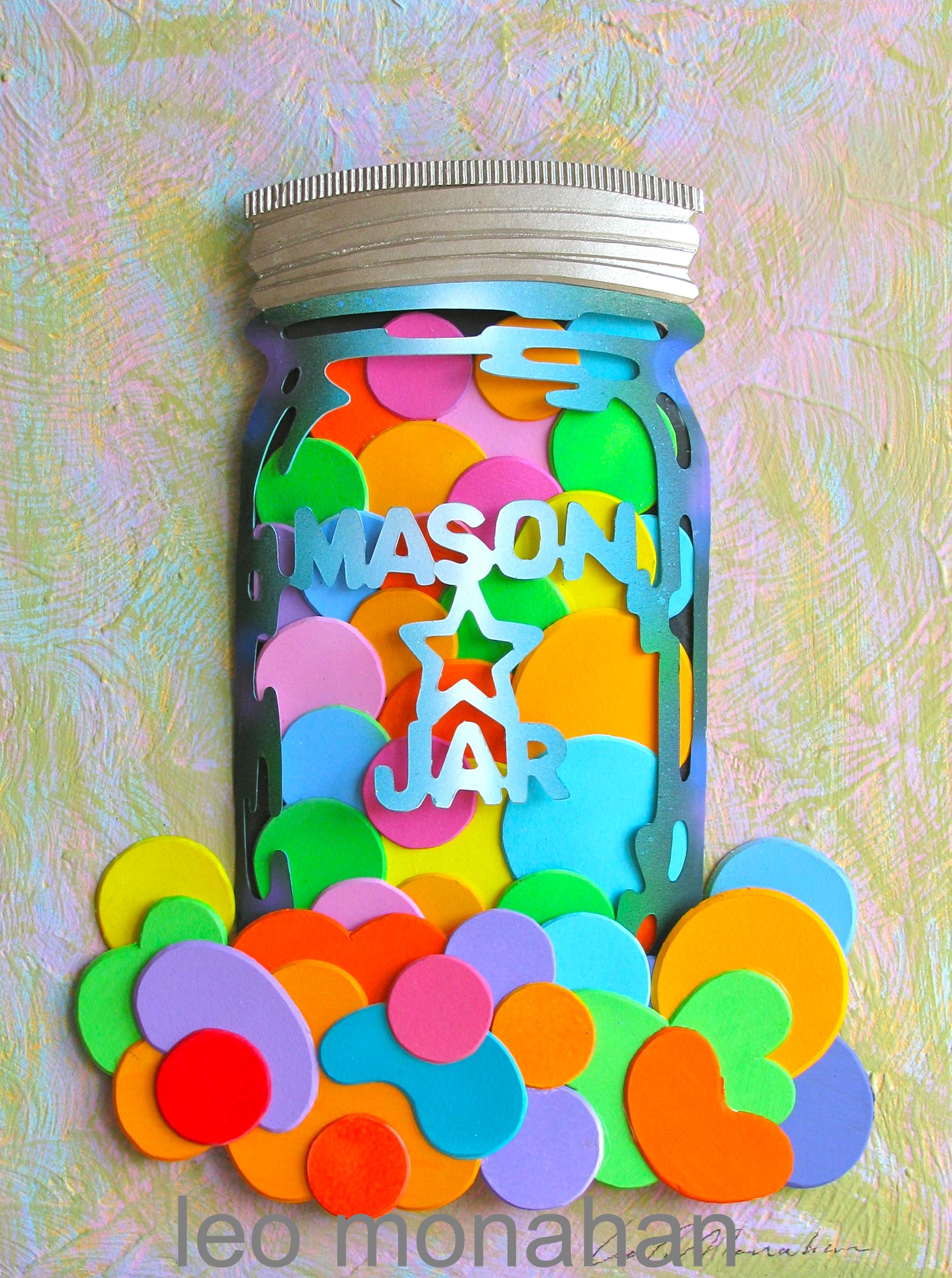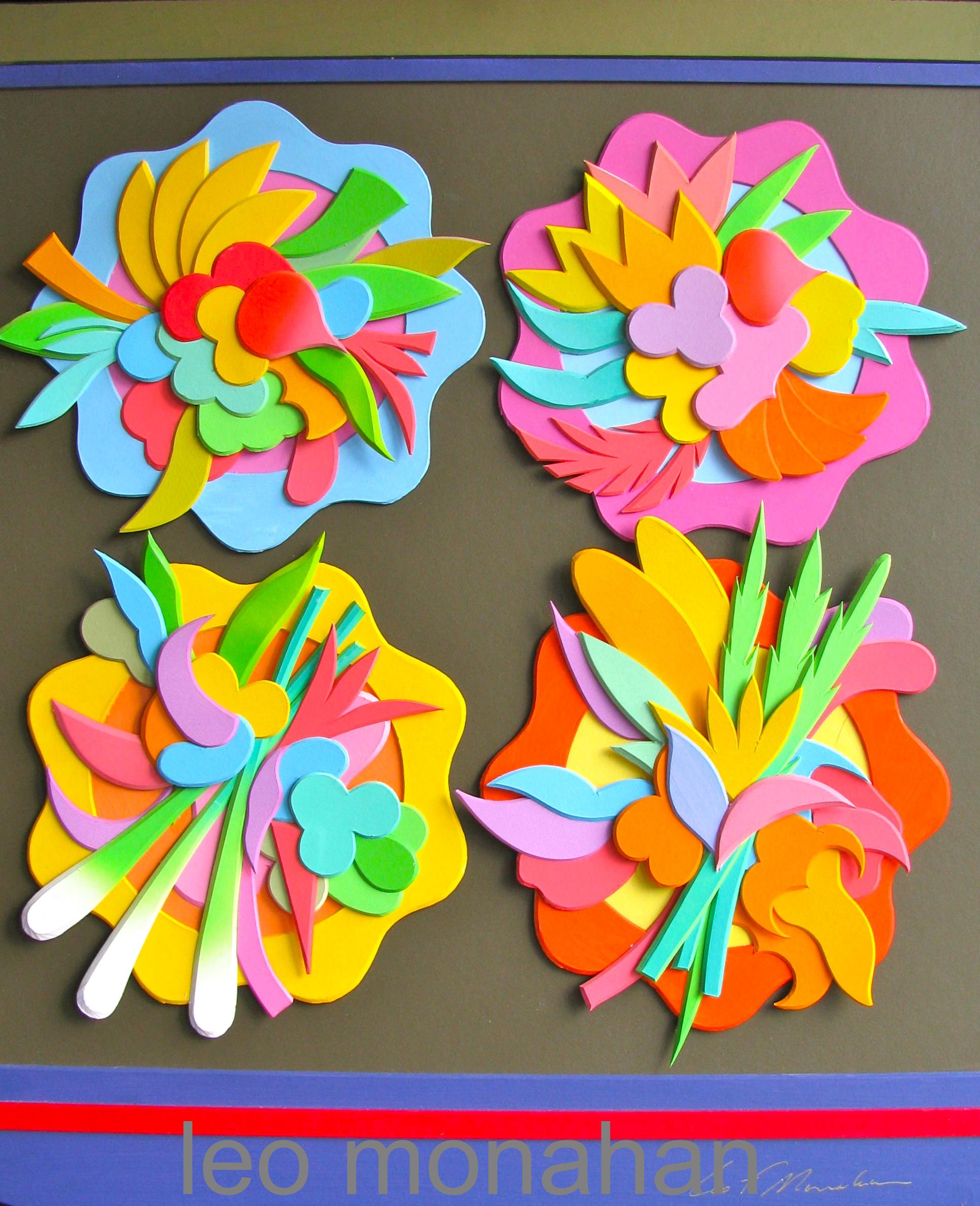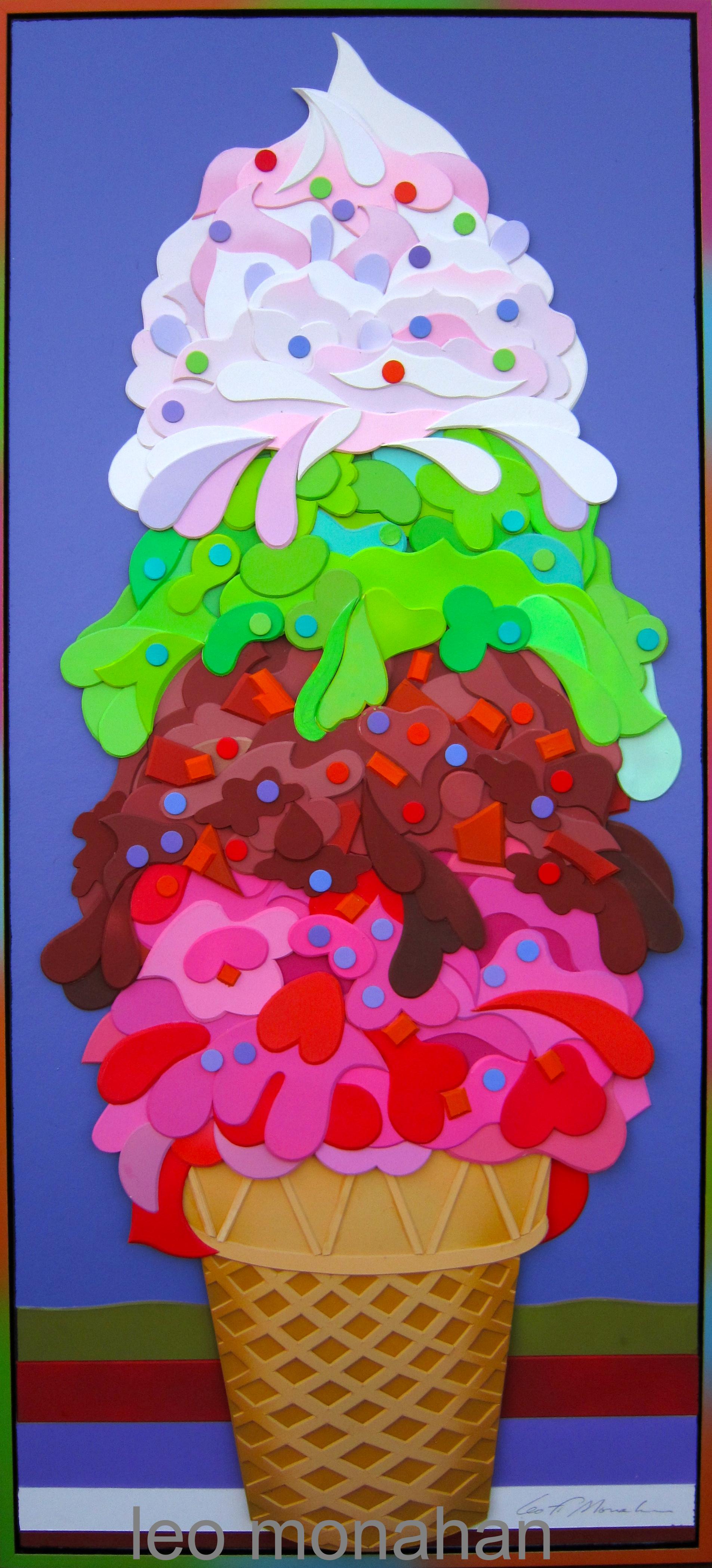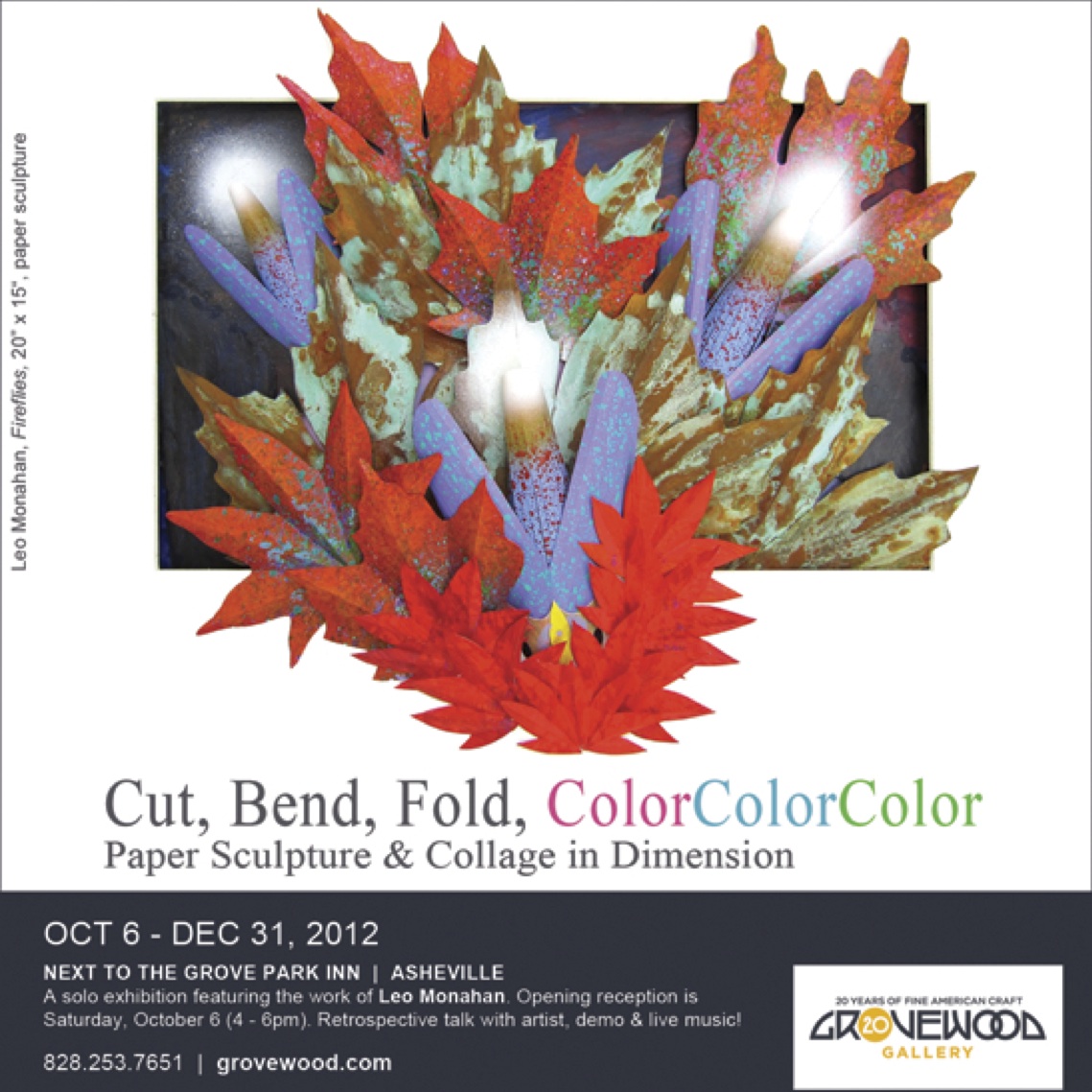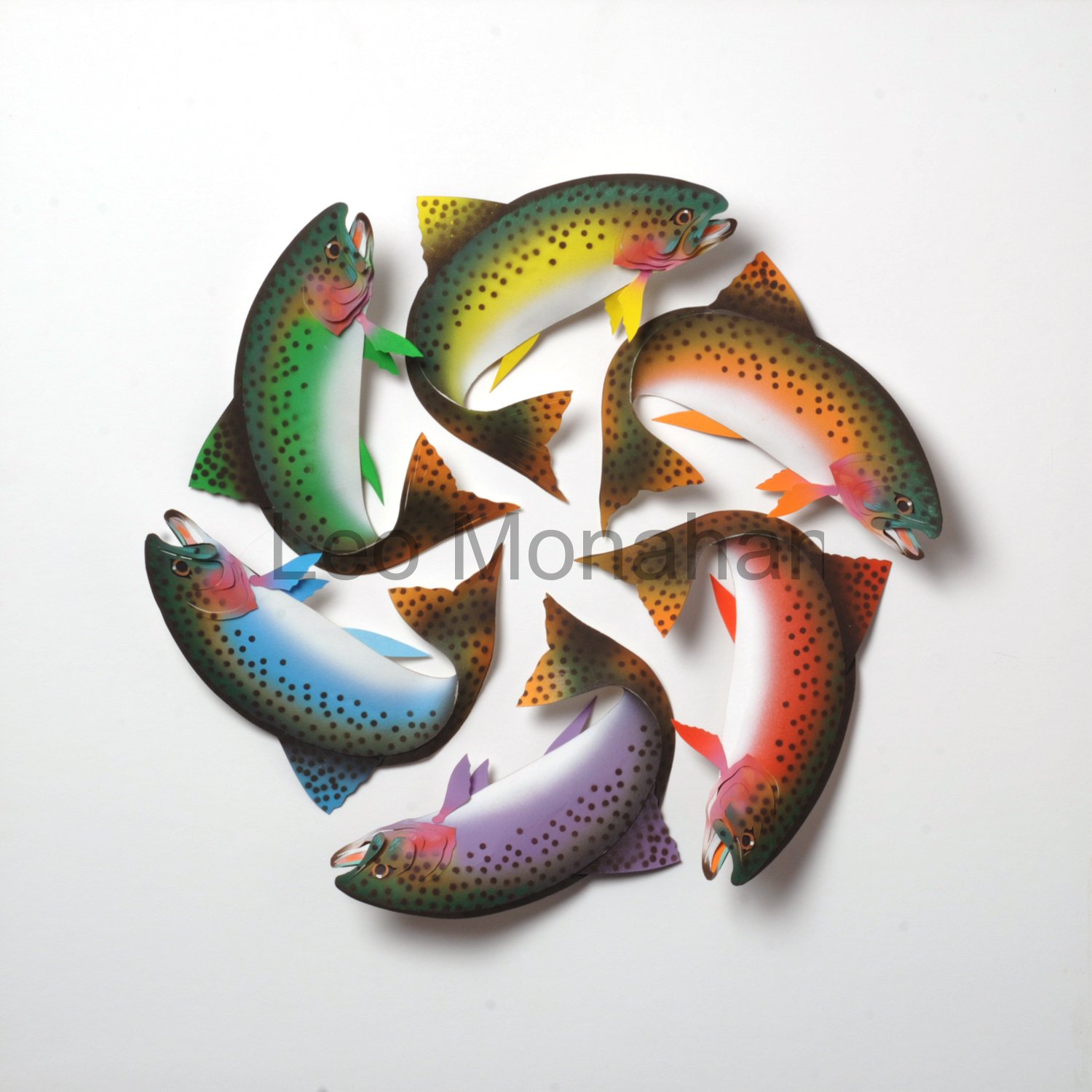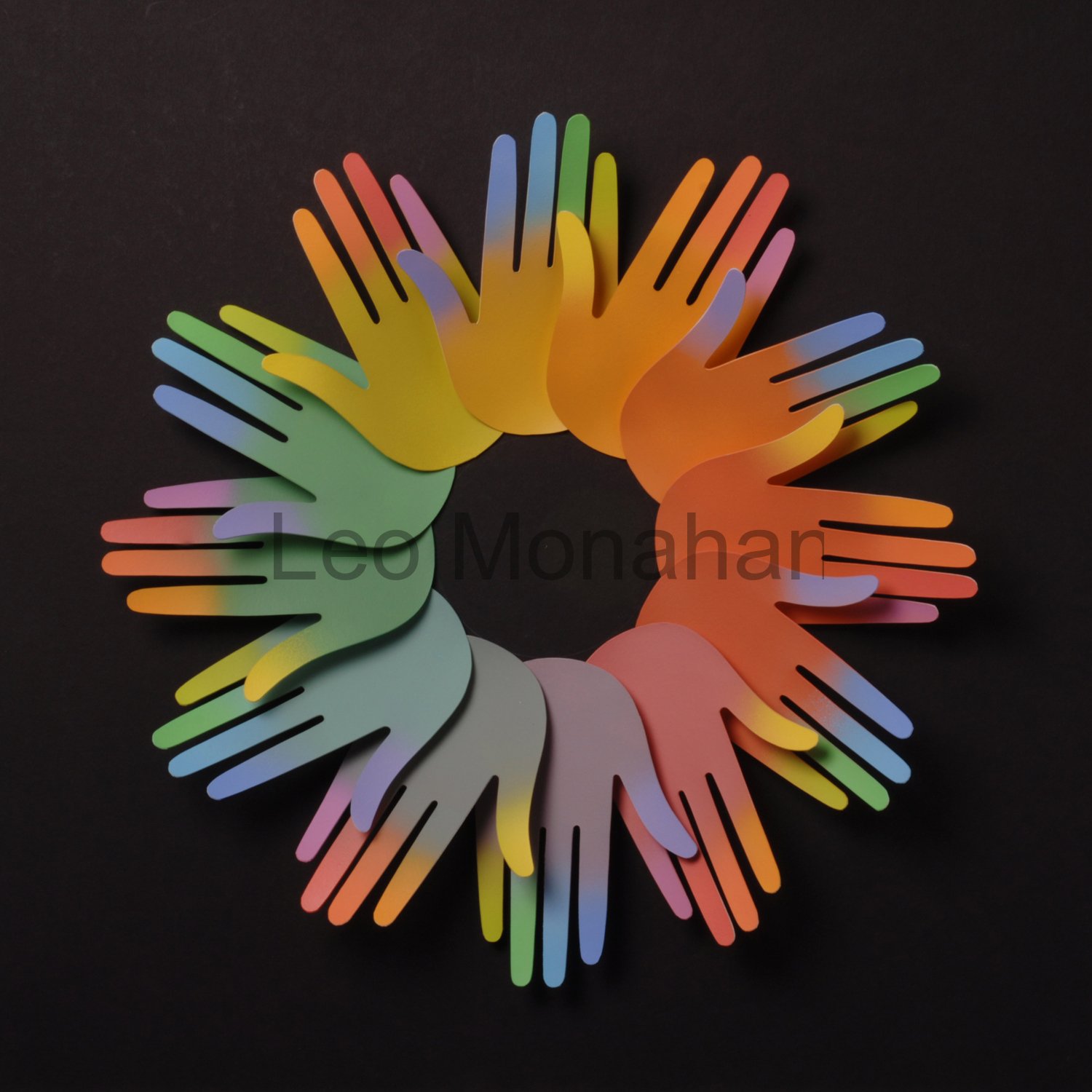Dear Reader,
“Them’re good eats,” one of my friends says when Matt serves up breakfast at the Saturday farmer’s market here in Barnardsville, NC. After taking everything into consideration, such as eating too much or starvation, I’ll take eating too much every time.
My “plate full of food” color wheel is painted in the three primary, red-yellow-blue, and the three secondary ones, orange-violet-green. The secondary colors are the direct complements of the primaries. The food shapes are the commonly accepted colors of yellow for bananas and lemons, red for apples, and tomatoes, green for scallions and asparagus, etc., etc., etc. You’d be confused if a Navel orange was suddenly Army green or Air Force blue.
As a child of the depression, I ate every mac of my “mac’n cheese”, and always had enough to eat, so why was I such a skinny teenager? We ate lots of poached deer, elk and antelope. “Poached” refers to how we got it rather than how we cooked it. Canning was very important, and we ate out of rows of Mason Jars full of color and good tastes all winter long. The color and taste of food seem to go together.
The harvest is on now, and the colors of the fresh fruit and vegetables are breathtaking. If you’ve never been to a county fair and seen the endless displays of “canning” for competition, then you ain’t never seen no color, not really.
A war started, and I thought the Army would send me to Korea to live in holes and eat C-rations, so I joined the Navy. In a matter of three months at boot camp, I gained 20 pounds and grew 2 inches. I was finally being nourished. Remember, I told you my mother thought that burnt pork chops was a recipe.
Fast forward to Los Angeles, the GI bill, the Chouinard Art Institute, and the first Disney scholarship. I discovered Langer’s Deli, Edward’s Steak House, and a good Mexican restaurant close to the school, which was by MacArthur Park.
When you live in LA, you only need three kinds of restaurants to survive, a Mexican, a Chinese (in Chinatown), and an “open all night” Jewish deli like Canter’s on Fairfax. You always had Dos XX, Tsingtao beer, and Cel Ray Tonic. All other restaurants are “bonus eating.”
From the substantial time I’ve spent outside the U.S., there are a few foods etched in my gastronomical memory: sushi in Japan, Christmas tamales and pupusas in El Salvador, wurst and schnitzels in Germany, pub food in England, dim sum in China, and almost anything in Italy (but mainly the gelato). If I can swing it, I eat ice cream every day, and gelato in Italy is a dream.
I close with a song from my food appreciation past:
Fried ham fried ham cheese and baloney bananas and jello
and after the macaroni we’ll have onions pickles and pretzels
and then we’ll have some more fried ham
Fried ham fried ham fried ham fried ham…(Repeat 10 times, fast!)
Thanks for visiting with me. Tip your waitress.
leo…
I’m never content with what I know,
only with what I can find out.
Food Colorwheel is $1200. Sold 10/24/12
Mason Jar I is $500.
Four Plates is $800.
Gelato is $900. Sold 10/27/12 at the Weaverville Art Safari
My work can be purchased at the Grovewood Gallery on the grounds of the Grove Park Inn in Asheville, NC. Click on the gallery link if you are interested in taking one of my workshops.
Please plan to attend the opening of my three-month exhibit at the Grovewood Gallery to help kick off American Craft Week. The opening is Saturday, October 6th, from 4-6pm. Music by Bruce Lang, good eats, lively conversation, and a paper sculpture demonstration by yours truly.

